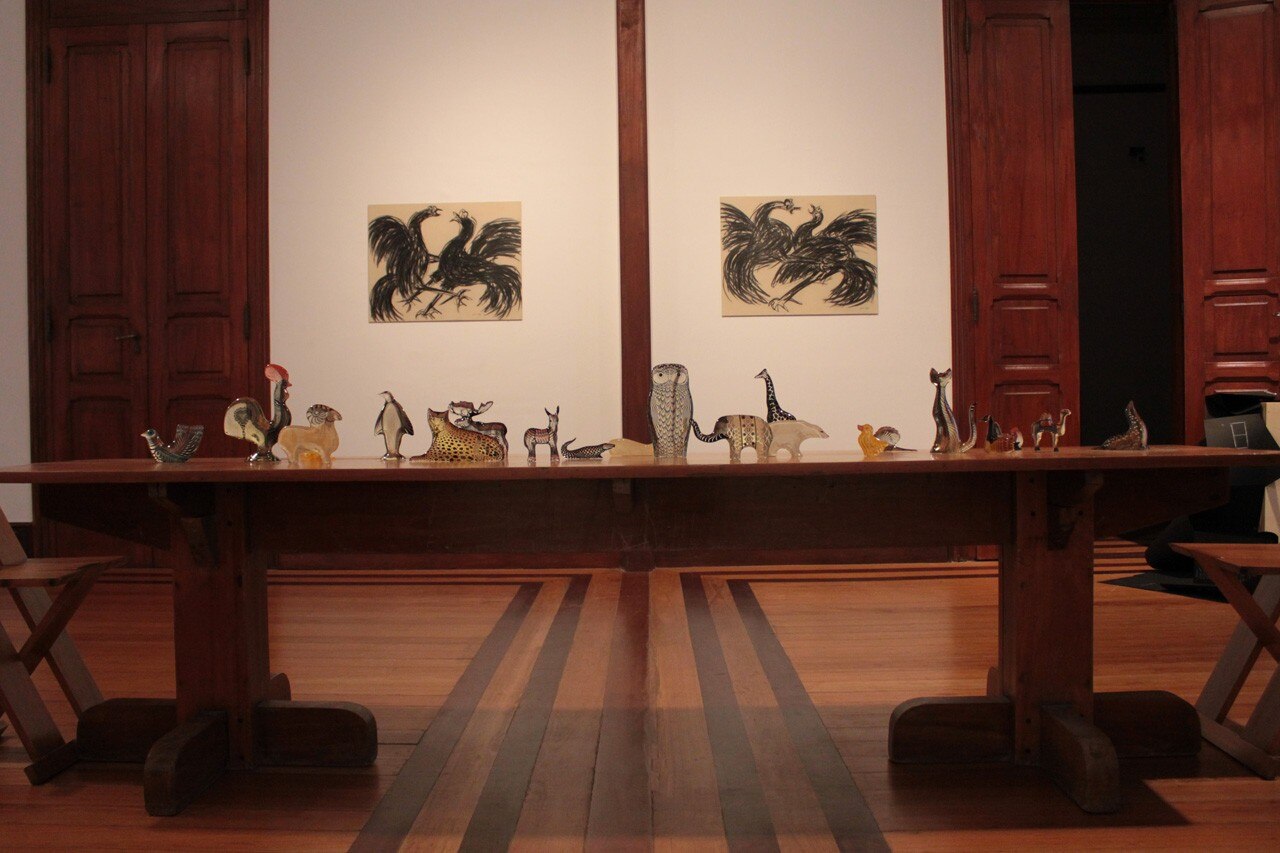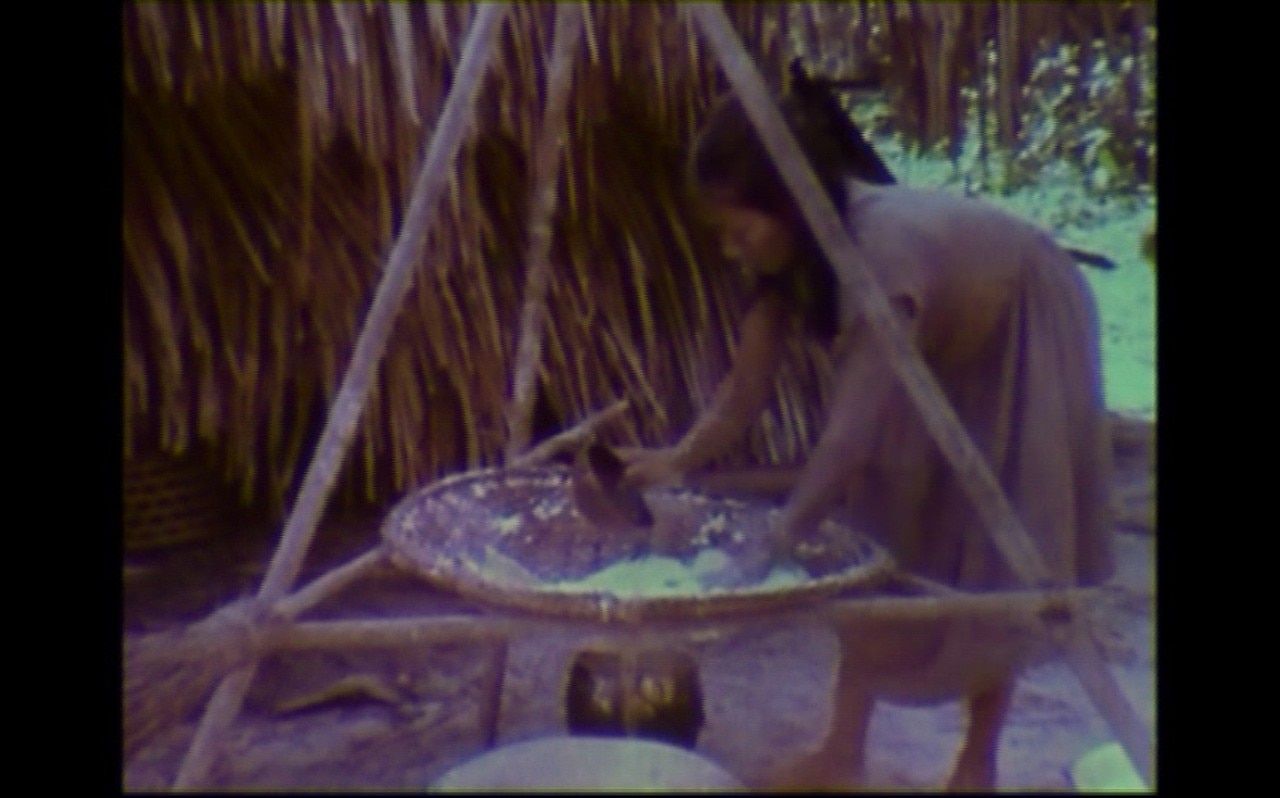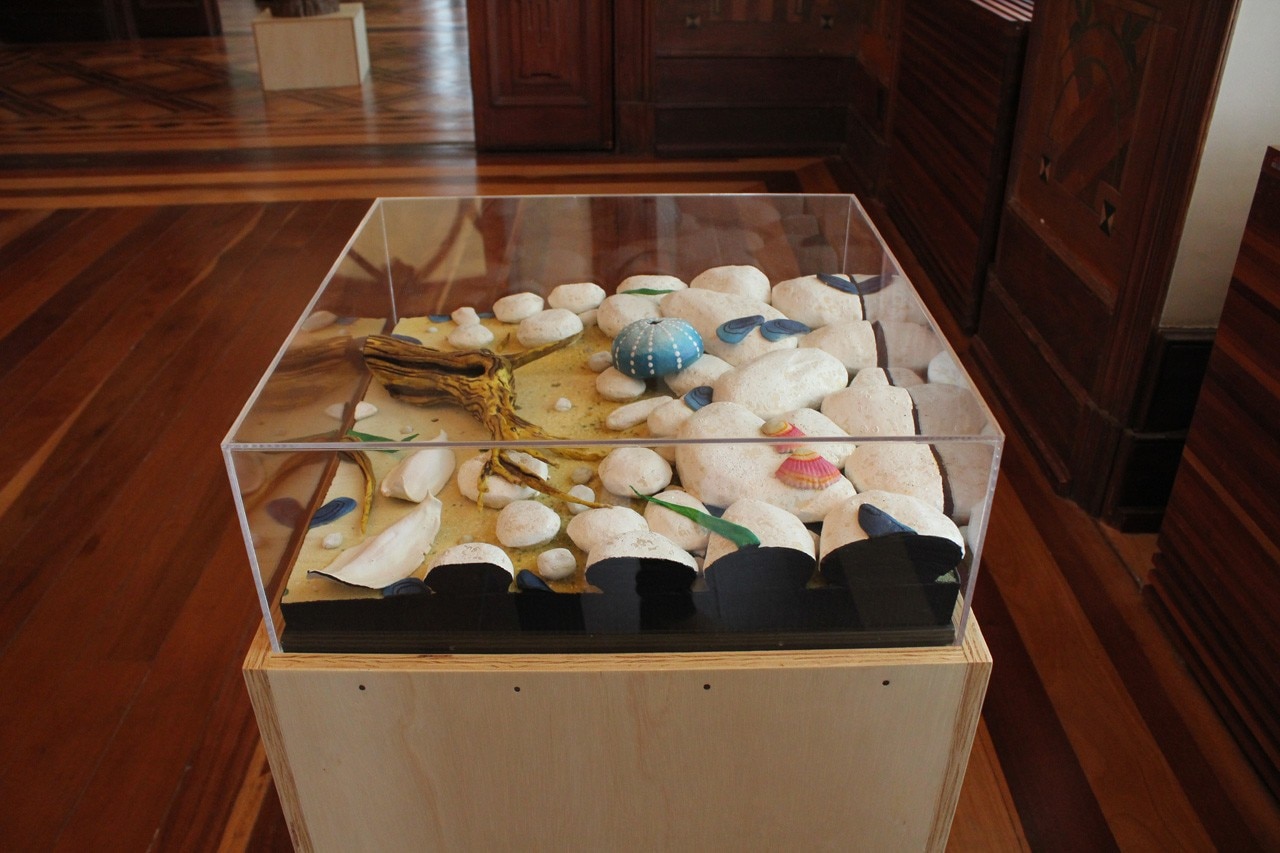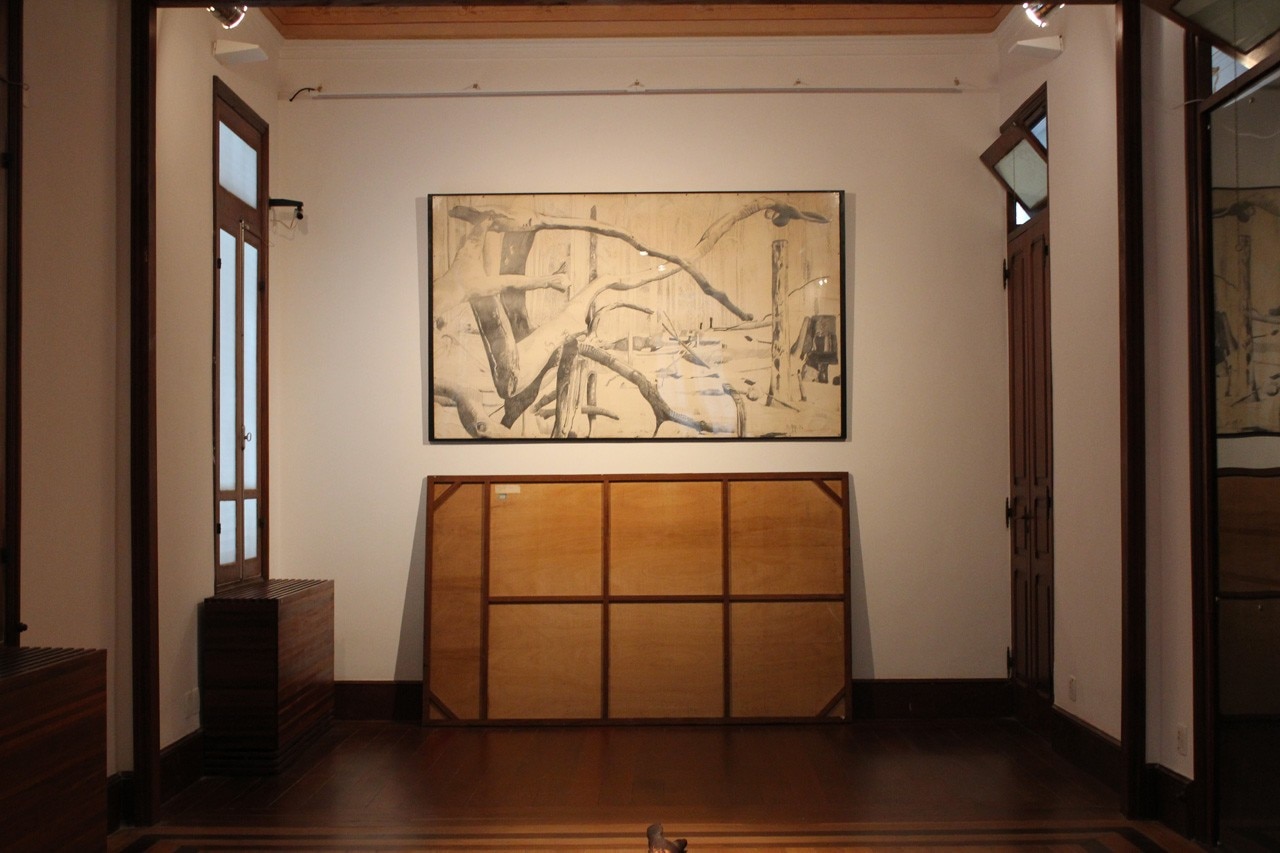

The Rainforest’s strongly contrasting chiaroscuro effects and plays of light and shade were transported to the rooms of the Palacete das Artes in Baendereck’s Dantesca, a large pencil drawing of a tangle of branches, depicted with great naturalistic attention that seems an allusion to the dark forest described at the beginning of Dante’s Inferno. The back of another work by the artist, placed under the aforementioned drawing, appeared to be waiting to be displayed in the museum spaces.
Its positioning was actually the fruit of a calculated curatorial choice aimed at drawing the visitor’s attention to the title of the work: Memento mori. Here, this Latin phrase adopts a more universal meaning than that historically associated with it and closely linked to the theme of human vanitas. The transience on which the artist invites reflection is, indeed, that of nature and of the Amazon Rainforest in particular, the death of which is already dangerously close.


